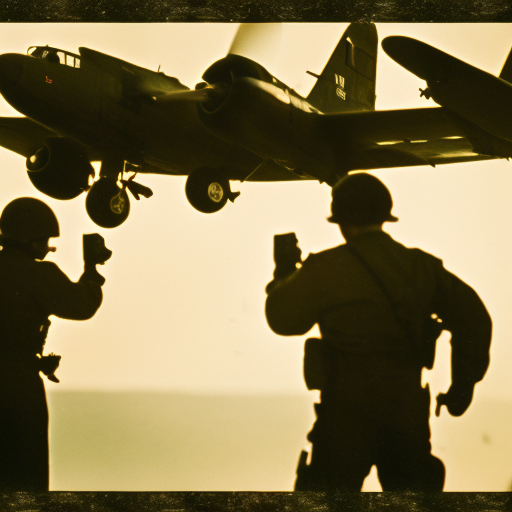The Doolittle Raid: A Bold Attack on Japan during World War II
The Doolittle Raid, also known as the Tokyo Raid, was a daring air raid conducted by the United States on April 18, 1942, during World War II. Led by Lieutenant Colonel James Doolittle, a group of B-25 Mitchell bombers took off from the aircraft carrier USS Hornet and targeted several key cities in Japan, including Tokyo. The raid was a significant morale booster for the American people and demonstrated the vulnerability of Japan’s homeland.
The Background:
After the devastating attack on Pearl Harbor on December 7, 1941, the United States was determined to strike back at Japan. However, the U.S. military lacked the capability to launch a direct attack on the Japanese mainland. Lieutenant Colonel James Doolittle proposed a plan to launch bombers from an aircraft carrier, a concept that had never been attempted before.
The Planning and Preparation:
The planning for the raid was carried out in utmost secrecy. Doolittle handpicked a group of volunteer pilots and crews who trained extensively for the mission. The B-25 bombers were modified to carry extra fuel and bombs, sacrificing some of their defensive armament. The crews practiced short takeoffs and landings to prepare for launching from the limited space of an aircraft carrier.
The Raid:
On April 18, 1942, the USS Hornet, accompanied by a task force of ships, set sail towards Japan. The bombers were loaded onto the carrier’s deck, and despite the risk of discovery, they successfully took off one by one. The raiders faced numerous challenges, including bad weather and the need to fly at low altitudes to avoid detection. Nevertheless, they pressed on towards their targets.
The Impact:
The Doolittle Raid had a significant impact on both the United States and Japan. For the American people, it was a much-needed boost to morale after the shock of Pearl Harbor. It showed that the U.S. military could strike back at Japan, even in the heart of their homeland. The raid also forced Japan to divert resources from other areas to strengthen their homeland defenses.
Japanese Response:
The Japanese were caught off guard by the raid. They had believed their homeland was safe from attack and were shocked to see American bombers flying over their cities. The psychological impact on the Japanese people was significant, as it shattered their sense of invincibility. The raid also prompted the Japanese to launch a series of unsuccessful retaliatory attacks on the U.S. mainland.
Aftermath:
Although the physical damage caused by the raid was relatively minor, the psychological impact was immense. The Doolittle Raid showed that Japan was vulnerable to attack and boosted American morale. It also forced the Japanese to divert resources from other areas to strengthen their homeland defenses. The raiders themselves faced various fates, with some crash-landing in China and others being captured by the Japanese. Many of the captured raiders endured harsh treatment as prisoners of war.
Legacy:
The Doolittle Raid remains a significant event in World War II history. It showcased the determination and ingenuity of the American military and demonstrated the possibilities of launching bombers from aircraft carriers. The raid also paved the way for future strategic bombing campaigns against Japan. In recognition of their bravery, the raiders were awarded the Distinguished Flying Cross, and Colonel Doolittle received the Medal of Honor.
In conclusion, the Doolittle Raid was a daring and successful air raid conducted by the United States on Japan during World War II. Led by Lieutenant Colonel James Doolittle, a group of B-25 bombers launched from the USS Hornet and struck key cities in Japan. The raid had a significant impact on both the American and Japanese morale, demonstrating the vulnerability of Japan’s homeland and forcing the Japanese to divert resources to strengthen their defenses. The raiders themselves faced various fates, with some crash-landing in China and others being captured by the Japanese. The Doolittle Raid remains a significant event in World War II history, showcasing the determination and ingenuity of the American military.












